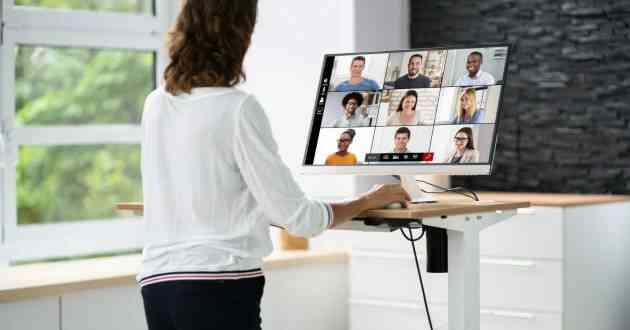Standing Desks vs. Sitting Desks: Which Is Better for Ergonomics?
Our comprehensive comparison delves into the ergonomic advantages of both standing desks and sitting desks
The debate between standing desks and sitting desks usage in the workspace has become increasingly prevalent as individuals seek to optimize their ergonomic setups for improved comfort and productivity. Both options offer unique benefits, and understanding the differences can help individuals make informed decisions about their workstation preferences. Our comprehensive office desks comparison delves into the ergonomic advantages of both standing desks and sitting desks, providing insights to help individuals make informed decisions about their workstation setups.
Standing Desks: Embracing Movement and Postural Support
Standing desks have gained popularity for their ability to promote movement and alleviate the negative effects of prolonged sitting. Here are some key advantages of standing desks in terms of workplace ergonomics:
- Improved Posture: Standing desks encourage users to maintain a more upright posture, reducing the likelihood of slouching or hunching over, which can lead to back and neck pain.
- Reduced Lower Back Strain: By standing, individuals engage their core muscles, which helps to alleviate strain on the lower back compared to prolonged sitting.
- Enhanced Circulation: Standing desks promote better blood flow and circulation throughout the body, reducing the risk of conditions such as deep vein thrombosis (DVT) associated with prolonged sitting.
- Adjustable Height Options: Many standing desks are adjustable, allowing users to customize the desk height to their specific ergonomic needs, ensuring proper alignment of the body.
- Active Movement: Standing desks encourage users to move more frequently throughout the day, whether it's shifting their weight, stretching, or taking short walking breaks, promoting overall health and well-being.
Sitting Desks: Prioritizing Comfort and Customization
Sitting desks remain a popular choice in many workplaces due to their comfort and familiarity. Here are some ergonomic benefits of sitting desks:
- Proper Alignment: Ergonomic sitting desks are designed to promote proper alignment of the spine, reducing the risk of back and neck strain. Adjustable chair heights and lumbar support contribute to maintaining a natural curvature of the spine.
- Reduced Joint Pressure: Sitting desks with ergonomic features help distribute body weight evenly, reducing pressure on joints and preventing discomfort or pain, particularly in the hips and knees.
- Support for Wrists and Arms: Ergonomic sitting desks often feature adjustable keyboard trays and mouse pads positioned at the correct height, reducing strain on the wrists and arms during prolonged typing.
- Customizable Setups: Sitting desks can be customized with various ergonomic accessories, such as monitor stands and footrests, to create a personalized and comfortable workstation that promotes good posture and reduces fatigue.
- Rest Opportunities: Sitting desks provide opportunities for brief periods of rest throughout the workday, allowing users to relax and alleviate muscle tension, ultimately improving overall comfort and productivity.
Choosing the Right Desk for You
Ultimately, the choice between a standing desk and a sitting desk depends on individual preferences, job requirements, and health considerations. Some individuals may benefit from the increased movement and postural support offered by standing desks, while others may prefer the comfort and customization options provided by sitting desks.
By understanding the ergonomic benefits of both office desk options, individuals can make informed decisions to create a workstation that supports their health, productivity, and overall well-being in the workplace.
In conclusion, whether you opt for a standing desk or a sitting desk, prioritizing ergonomics is key to creating a comfortable and productive workspace. Consider your unique needs and preferences when selecting the right desk for you, and don't hesitate to experiment with different setups to find what works best for your body and work style.


